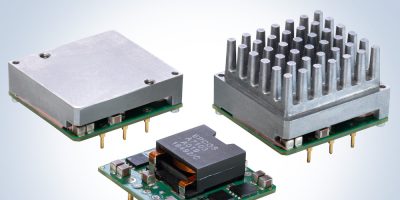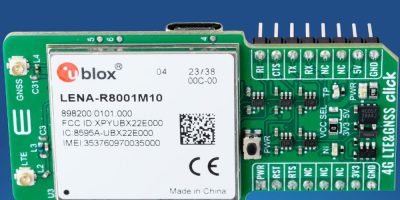TDK has announced the addition of adjustable current limit models to the TDK-Lambda brand 300W rated i7C non-isolated DC-DC converter series. These buck-boost board mount power modules have input ranges of 9 up to 53Vdc with output voltage adjustment from 5 to 28V, 8 to 24V or 9.6 to 48V depending upon the output current rating. The i7C topology enables a seamless transition from buck (voltage reduction) to boost (voltage increase) operation. The “Itrim” output current limit function enables parallel operation of modules for higher power requirements, operation in constant current, or reducing device stress where overloading may occur due to charging large capacitive loads.
The new models are ideal for generating additional high-power DC outputs from 12, 24, and 48V system voltages in medical, automated guided vehicles (AGV), Industrial Mobile Robots (IMR), drones, industrial, test, measurement, and battery-powered equipment.
Having high efficiencies of up to 97% reduces waste heat, allowing the product to operate and deliver high useable power in demanding thermal environments. Under light load conditions, the i7C’s control techniques significantly reduce power consumption. Under zero load conditions, the typical input current for these modules is 5mA. When the module is inhibited, this current can be further reduced to approximately 0.25mA. The low quiescent current allows battery-powered equipment to remain functional longer during periods of non-operation.
These additional models include output voltage adjustment, negative logic remote on-off, output current monitoring, positive remote sense, plus input under-voltage, over-current and thermal protection. A sync function enabling a common operating switching frequency between multiple converters to reduce system noise is also included.
Three mechanical configurations are available; low profile open frame measuring 34 x 36.8 x 14.7mm (LxWxH), baseplate construction for conduction cooling (15.5mm in height), or integral heat sink for convection or forced air cooling (24.9mm in height). The i7C converters have the industry standard 1/16th brick pin-out.
All models are certified to IEC/UL/CSA/EN 62368-1 and carry the CE and UKCA marks for the Low Voltage and RoHS Directives.







